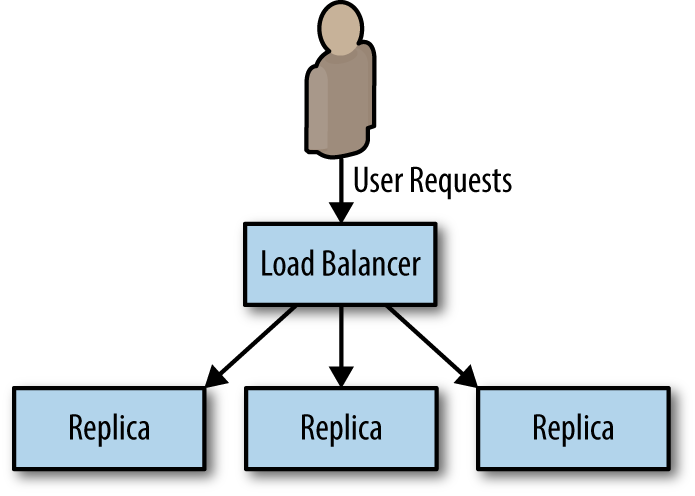Chapter 5. Replicated Load-Balanced Services
The simplest distributed pattern, and one that most are familiar with, is a replicated load-balanced service. In such a service, every server is identical to every other server and all are capable of supporting traffic. The pattern consists of a scalable number of servers with a load balancer in front of them. The load balancer is typically either completely round-robin or uses some form of session stickiness. The chapter will give a concrete example of how to deploy such a service in Kubernetes.
Stateless Services
Stateless services are ones that don’t require saved state to operate correctly. In the simplest stateless applications, even individual requests may be routed to separate instances of the service (see Figure 5-1). Examples of stateless services include things like static content servers and complex middleware systems that receive and aggregate responses from numerous different backend systems.

Figure 5-1. Basic replicated stateless service
Stateless systems are replicated to provide redundancy and scale. No matter how small your service is, you need at least two replicas to provide a service with a “highly available” service level agreement (SLA). To understand why this is true, consider trying to deliver a three-nines (99.9% availability). In a three-nines service, you get 1.4 minutes of downtime per day (24 × 60 × 0.001). ...
Get Designing Distributed Systems now with the O’Reilly learning platform.
O’Reilly members experience books, live events, courses curated by job role, and more from O’Reilly and nearly 200 top publishers.

